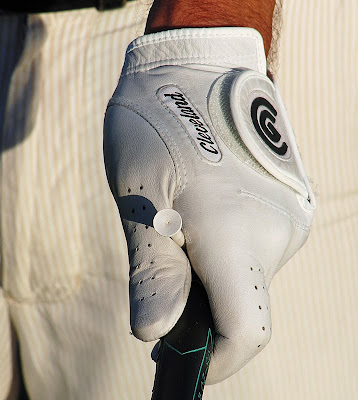Let’s talk a little about putting.
All top professionals stress how great putting is necessary to win tournaments. Whether a major championship is on the line or a two dollar bet among friends, it all comes down to making putts. As a teaching professional, people ask me all the time, “how can I lower my handicap?” The answer is simple. Make more putts. It might not be the answer they want to hear, but it is the truth. I think 30 putts or less per round is an achievable goal for everyone.
I have been through thousands of putting thoughts and very few have stood the test of time. I am always trying to simplify the game. If your putts are not dropping, try these simple thoughts.
1. Stick to your putting routine. (if you do not have one, we need to talk).
2. Always visaulize the ball dropping into the hole.
3. Have a small forward press to start the stroke.
4. Hold the finish.
Here's a technique to ensure a good putting grip:
With the left hand on the club, leave the index off of the grip and slide the right hand down:
In the completed grip, the left index rests over knuckles of the right hand. This grip minimizes any breakdown of the wrists.
Bobby Hinds is a Teaching Professional at Woodley Lakes Golf Course with over 10 years of teaching experience. If you have questions about your golf swing, email Bobby atbobbyhinds@aol.com He is available for lessons through the Pro Shop. For more information, go to BobbyHinds.com.








